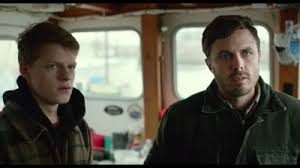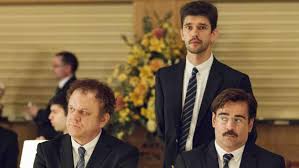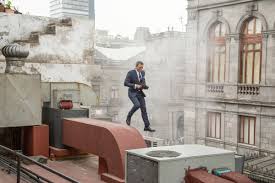YOU CAN’T GO HOME AGAIN: Movie Reviews of Manchester By The Sea, It’s Only the End of the World and The Commune by Howard Casner
Posted: November 29, 2016 | Author: Donald | Filed under: Uncategorized | Tags: C.J. Wilson, Casey Affleck, Gretchen Moll, It’s Only the End of the World, Jean-Luc Lagarce, Kenneth Lonergan, Kyle Chandler, Lea Seydoux, Lucas Hedges, Marion Cotillard, Matt Damon, Matthew Broderick, Michelle Williams, Nathalie Baye, The Commune, Thomas Vinterberg, Tobias Lindholm, Trine Dryholm, Ulrich Thomson, Vincent Cassel, Xavier Dolan | 16 Comments »For questions: hcasner@aol.com
First, a word from our sponsors: I am now offering a new service: so much emphasis has been given lately to the importance of the opening of your screenplay, I now offer coverage for the first twenty pages at the cost of $20.00. For those who don’t want to have full coverage on their screenplay at this time, but want to know how well their script is working with the opening pages, this is perfect for you. I’ll help you not lose the reader on page one.
Ever wonder what a reader for a contest or agency thinks when he reads your screenplay? Check out my new e-book published on Amazon: Rantings and Ravings of a Screenplay Reader, including my series of essays, What I Learned Reading for Contests This Year, and my film reviews of 2013. Only $2.99. http://ow.ly/xN31r
and check out my Script Consultation Services: http://ow.ly/HPxKE
Warning: SPOILERS
 You Can’t Go Home Again is, of course, the title of a posthumously published novel by Thomas Wolfe, and a phrase that has entered common discourse since. I’ve seen three movies lately that are about people returning home or using memories of their early years as the basis for their stories.
You Can’t Go Home Again is, of course, the title of a posthumously published novel by Thomas Wolfe, and a phrase that has entered common discourse since. I’ve seen three movies lately that are about people returning home or using memories of their early years as the basis for their stories.
The basic premise of writer/director Kenneth Lonergan’s new film Manchester by the Sea revolves around Lee Chandler (Casey Affleck), a janitor living in Boston who is very good at his job, but is a loner with a somewhat self-destructive personality. When he receives word that his older brother Joe (Kyle Chandler) has died, he returns to his home city of Manchester by the Sea, a fishing and tourist town. There he is shocked to discover that his brother in his will has requested Lee to become guardian to Joe’s sixteen year old son, Lucas. Joe has provided for Lucas’ expenses in his will and just needs Lee to return to Manchester to live.
Why Lee can’t return and the conflicts over how to handle this request make up the bulk of the movie and much of the heart breaking suspense is waiting to find out what happened that led to Lee’s present situation-you know it has something to do with his three children since they are only shown in flashback. The waiting is painfully unbearable at times. Read the rest of this entry »
THE GOOD, THE NOT SO BAD AND THE UGLY: AFI 2015, PART 3: NO RESERVATIONS-Movie Reviews of the movies The Lobster and Youth by Howard Casner
Posted: December 2, 2015 | Author: Donald | Filed under: Uncategorized | Tags: Ben Whishaw, Collin Farrell, Efthymis Filippou, Garry Moutaine, Harvey Keitel, Jane Fonda, John C. Reilly, Lea Seydoux, Michael Caine, Olivia Coleman, Paola Sorrentino, Paul Dano, Rachel Weisz, The Lobster, Yorgos Lanthimos, Youth | 1,076 Comments »First, a word from our sponsors: I am now offering a new service: so much emphasis has been given lately to the importance of the opening of your screenplay, I now offer coverage for the first twenty pages at the cost of $20.00. For those who don’t want to have full coverage on their screenplay at this time, but want to know how well their script is working with the opening pages, this is perfect for you. I’ll help you not lose the reader on page one.
Ever wonder what a reader for a contest or agency thinks when he reads your screenplay? Check out my new e-book published on Amazon: Rantings and Ravings of a Screenplay Reader, including my series of essays, What I Learned Reading for Contests This Year, and my film reviews of 2013. Only $2.99. http://ow.ly/xN31r
and check out my Script Consultation Services: http://ow.ly/HPxKE
Warning: SPOILERS
 Two movies at AFI were brought there by filmmakers who worked with an English speaking cast for the first time. Screenwriter Efthymis Filippou and writer/director Yorgos Lanthimos, from Greece, previously gave the world the oddity Dogtooth and, appropriately enough, now give us the quite possibly even odder oddity, The Lobster.
Two movies at AFI were brought there by filmmakers who worked with an English speaking cast for the first time. Screenwriter Efthymis Filippou and writer/director Yorgos Lanthimos, from Greece, previously gave the world the oddity Dogtooth and, appropriately enough, now give us the quite possibly even odder oddity, The Lobster.
The Italian filmmaker Paola Sorrentino, who directed and co-wrote the absolutely brilliant and ravishing The Great Beauty, has now given us Youth.
Overall, they have all succeeded rather well in spite of the fact that they are creating in a language that is not their native tongue.
Efthymis Filippou and Yorgos Lanthimos’ The Lobster is set in one of those dystopian futures and is located in The City, a place where everyone must be in a relationship, and if you are not (say you are widowed), you go to a hotel with others like yourself and are given 45 days to fall in love. If, at the end of your stay, you find yourself yet single, you are turned into the animal of your choice. Read the rest of this entry »
REEL MEN, REAL MEN, PART TWO: Movie review of Mr. Turner, Saint Laurent and The Theory of Everything by Howard Casner
Posted: November 25, 2014 | Author: Donald | Filed under: Uncategorized | Tags: Anthony McCarten, Bertrand Bonello, Brady Corbet, Charlie Cox, Christian McKay Emily Watson, David Thewlis, Dennis Sciama, Dick Pope, Dorothy Atkinson, Eddie Redmayne, Felicity Jones, Gaspard Ulliel, Helmut Berger, Jacqueline Durran, James Marsh, Jérémie Renier, Lea Seydoux, Louis Garrel, Marion Bailey, Martin Savage, Mike Leigh, Mr. Turner, Ruth Sheen, Saint Laurent, Simon McBurney, Stephen Hawking, Suzie Davies, The Theory of Everything, Thomas Bidegan, Timothy Spall | 26 Comments »First, a word from our sponsors. Ever wonder what a reader for a contest or agency thinks when he reads your screenplay? Check out my new e-book published on Amazon: Rantings and Ravings of a Screenplay Reader, including my series of essays, What I Learned Reading for Contests This Year, and my film reviews of 2013. Only $2.99. http://ow.ly/xN31r
Warning: SPOILERS
 I continue now with my reviews of the sudden spate of movies based on real people that are arriving late in the year because, well, we’re entering awards season, and what awards season would be complete without an overabundance of inspired by true event stories.
I continue now with my reviews of the sudden spate of movies based on real people that are arriving late in the year because, well, we’re entering awards season, and what awards season would be complete without an overabundance of inspired by true event stories.
First up…
Early on in Mr. Turner, writer/director Mike Leigh’s latest film about the famed 19th century land- and seascape artist, his servants prepare a pig’s head for a meal.
What is so interesting about this, and the reason I draw attention to it, is that the porcine’s pate bears a remarkable resemblance to the great painter himself with the artist constantly snorting and grunting as if Babe was his mother (or father, I can’t remember whether that famed shoat was a boar or a sow).
In fact, one might say that, Timothy Spall, a member of Leigh’s stock company of actors and who plays the title character here, does one of the greatest, if not greatest, imitation of a sus scrofa domesticus I’ve ever encountered in cinematic history. If someone is planning a remake of Animal Farm, I think we have our Old Napoleon.
It may be a dubious distinction, but a distinction none the less. Read the rest of this entry »
Movie Reviews of BLUE IS THE WARMED COLOR and SAL by Howard Casner
Posted: November 6, 2013 | Author: Donald | Filed under: Uncategorized | Tags: Abdellatif Kechiche, Adele Exarchopoulos, Blue is the Warmest Color, Ghalia Lacroix, James Franco, Julie Maroh, Keir Dullea, Lea Seydoux, Sal, Sal Mineo, Stacey Miller, Val Lauren | 97 Comments »Oh, to be young again. To be that age when you had no idea what anything meant. Where you had no control over your emotions. Where you didn’t know the difference between love and lust, or if there was one, or if you cared. Where every day was full of the pain and awkwardness of trying to navigate where you fit into the world. I hated every single, tortuous, tension-filled moment of it. And I would give anything, anything, to return to those halcyon days of innocence.
That is what I was thinking as I was watching the intensely tense movie that everyone, just everyone, is talking about, the latest Cannes award winner, Blue is the Warmest Color (or The Life of Adele, Chapters 1 & 2—and if you’re not talking about it, what’s wrong with you). And what an experiment in intensity it is. Blue… is so intense (how intense it is?), it makes Gravity look like a “you must be this small to ride this ride” at Disneyland ride (which it may soon be, for all I know). It’s so intense, it leaves you exhausted at the fin at the end (it is French, you know, and oh, how Francé it is). It’s so intense, I’m not sure I ever want to see it again.
Blue… is written by Ghalia Lacroix and Abdellatif Kechiche, who also directed (they are long time collaborators, most recently Black Venus and The Secret of the Grain). The movie is adapted from a popular graphic novel by Julie Maroh. Its story is, in many ways, simplicity itself: girl meets girl, girl loses girl, girl…well, I won’t spoil the ending. But the emotions displayed, the emotional rollercoaster ride, the rawness of it all (including, yes, those fifteen minutes of incredibly, just this side of, graphic sex—the women were wearing fake genitalia, after all—sorry guys, that’s probably a bigger spoiler than if I had shared the ending), are anything but.
Adele, the lead, is a baby dyke still in high school who doesn’t quite know why something is missing from her life. She is played by Adele (coincidence or not, you be the judge) Exarchopoulos with the pouty lips of a Bridgette Bardot and a wisp of unruly hair constantly falling in front of her face. Lea Seydoux is Emma, the more “tomboyish” of the two, an older (well, slightly older, four years maybe) woman struggling to be an artist. They first see one another on the street as they casually pass by (their turning to look at each other reflecting an event in a book Adele is reading for literature class—the cultural references are both a tad heavy handed while making one wonder why school over there is so much more challenging than here). At first destined to become ships that pass in broad daylight, they meet up again at a bar and it’s not long before all the fireworks that Hitchcock used in To Catch a Thief and David Lean used in Summertime are going off overtime.
Both actresses are scarily superb. I don’t know how the two and the director did it (and based on the scandalous reporting that has come out afterwards, I’m not sure I want to), but working together, the three have reached depths you will probably not see in another movie this year.
Blue… is not for everyone, and I don’t just mean because of the realistic portrayal of gay sex between women. One of the main characteristics of director Kechiche is a certain, well… leisureliness to it all. Let’s just say that here, as in the movie The Secret of the Grain, he is not in a hurry, to say the least. But that’s not automatically a bad thing (unless you think Pacific Rim is a great work of art). Kechiche’s scenes are like movements in a Beethoven symphony, which also go on too long until they reach a point where you desperately wish they would never stop. And like said movements, Blue…’s scenes go on until you start asking yourself, will this never end, then continue on for so long until you start hoping they never reach a coda.
And it’s a style that leads to such incredible set pieces as a dinner party thrown by Adele for Emma and Emma’s friends. The scene takes forever to run its course. But as it goes on, in ways deep and weather sharp, in both subtle and marvelous ways, the darkness creeps in as you realize that the days of this relationship are numbered. It’s maddening, but moving. It’s long, but tense and powerful. Until the whole movie seems that way, a long, drawn out, slow moving microscopic examination of first love that you finally wish would never end.
One of the best pictures of the year. Not recommended you see it with your mother.
I could not believe what I found out while doing research on the new movie Sal (research, hah—I looked it up on IMDB—so shoot me). There are five credits for the screenplay (one for a book, four for story, and then one of those, Stacey Miller, for the screenplay itself). Five credits. Five. The reason I’m throwing such a hissy fit over this is because—Sal has no real story and has an almost worthless screenplay. And it took five people to not come up with it?
Sal is a last day in the life of story, this time about the actor Sal Mineo, most famous now for his break out (and Oscar nominated) performance in Rebel Without A Cause. The story (and I say that trying not to FOTFLOL without stopping) starts with a dinner the night before; then begins proper with his waking up the following morning; follows him during the day (including three or more car rides in which for some reason he always listens to the exact same song over and over again—it’s unclear whether this is because the song means something or the producers just didn’t have enough money to pay for the rights to another tune); spends a bit of time at the rehearsal for a production of the play P.S. Your Cat is Dead with 2001: A Space Odyssey’s Keir Dullea; until his arrival home that night and his death at the hands of a mugger.
It’s uneventful and pointless (and takes forever to be so). Even worse, it’s just plain boring. And after it was over, I still had absolutely no idea why anyone wanted to make this movie or thought that Mineo’s last day would be interesting in and of itself. The only real message I took from it was that his death at least saved the world from what appeared to be a perfectly dreadful production of a perfectly mediocre play co-starring a perfectly less than mediocre actor (and I’m not referring to Mineo).
Sal is played by Val Lauren, and though his has the same doe-eyes of innocence as Mineo, he just never remotely seems to resemble that waif-like star. Even in one of Mineo’s last performances (in the TV series Columbo), and all those years had passed, he seemed barely changed from the wispy, shy teen John “Plato” Crawford in Rebel…. Yet Lauren’s interpretation almost made me think he had never even seen Mineo before (and the film including a scene from Rebel… at the end of the movie doesn’t help the matter of comparison either).
It’s directed by James Franco (yes, the actor James Franco, and based on this movie, he shouldn’t quit his day job). And if you thought Kechiche was leisurely, he’s Michael Bay in comparison to Franco’s approach. Of course, since there’s no story, there’s not a lot to work with. At the same time, Franco’s also one of the people who gets credited with the story, so he really has no one to blame but himself.
In the 1950’s and 1960’s, Jim Bishop, a historian, wrote a series of books that followed the last day of a notable figure, including The Day Lincoln Was Shot, The Day Christ Died and The Day Kennedy Was Shot. The books were extremely detailed, focusing on such mundane issues as what the figure would have had for breakfast. The books may not have been great literature, but they were great reads. I thought of those books as I was watching this movie, wondering whether Miller and Franco were trying to do the same thing. Maybe, maybe not. But if so, for some reason (possibly due to the importance of the person involved), knowing what Lincoln ate for his first meal of the day had a bigger emotional impact on me than watching Lauren chug milk from a bottle and orange juice from a carton. And maybe that is where the movie began going wrong.












